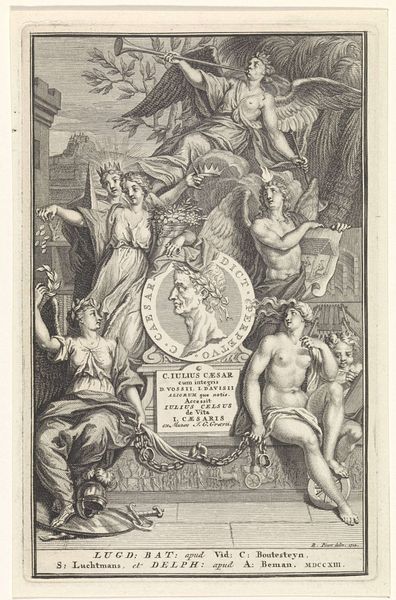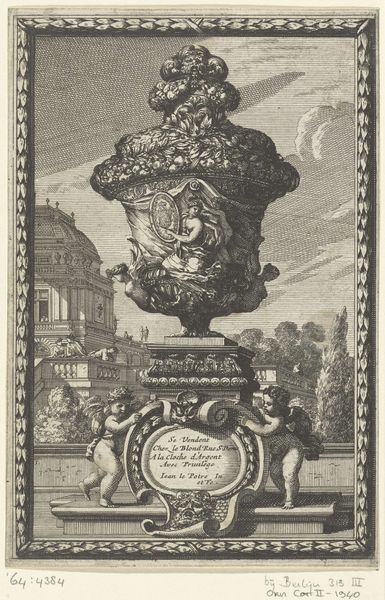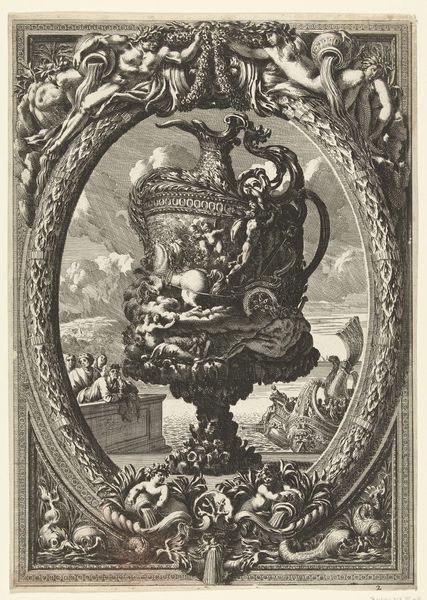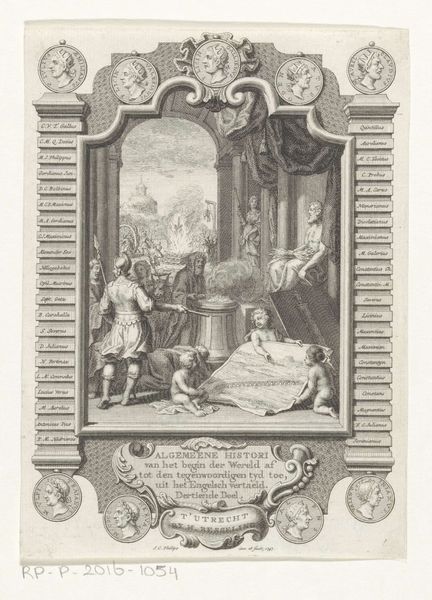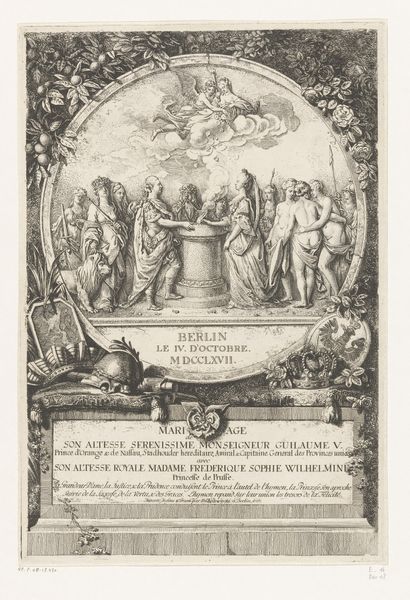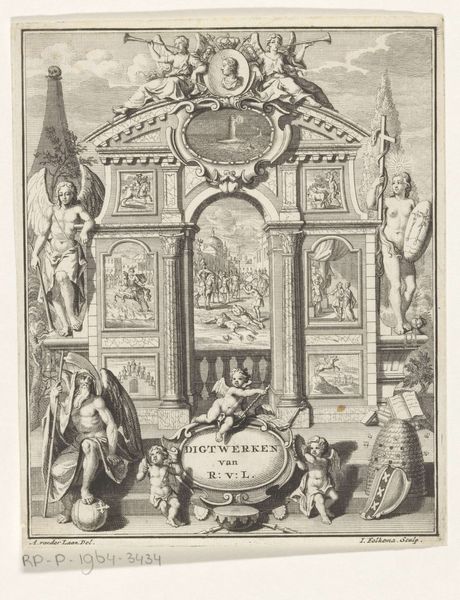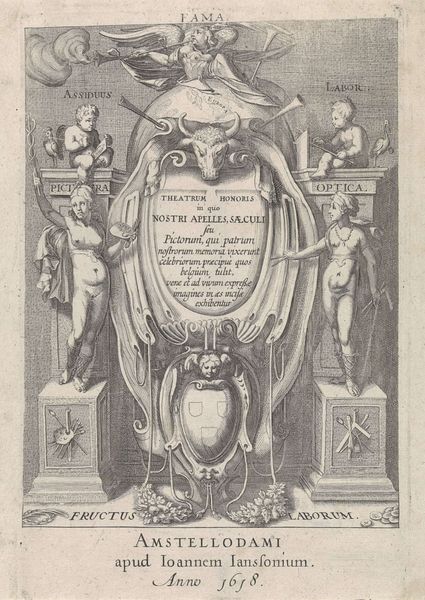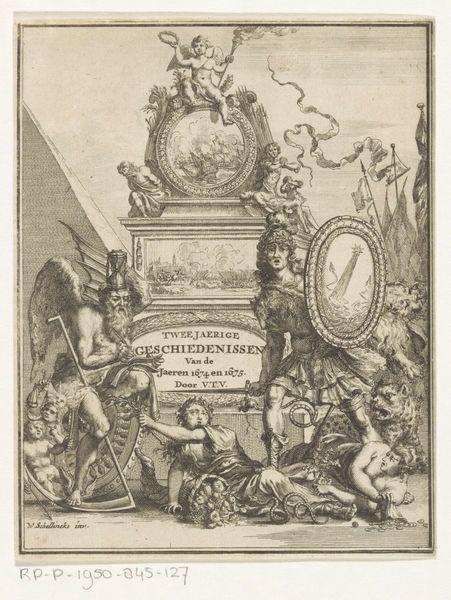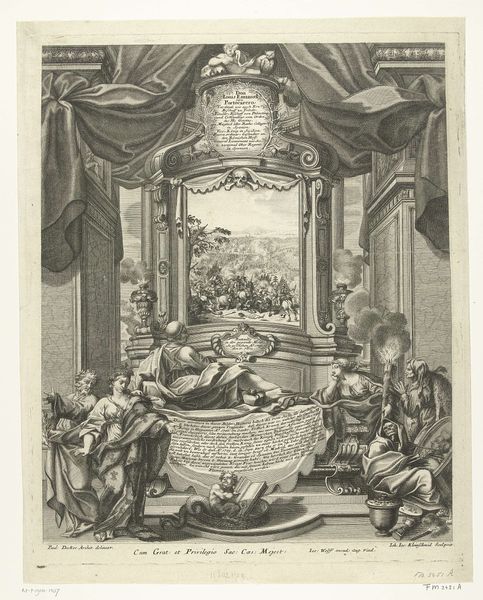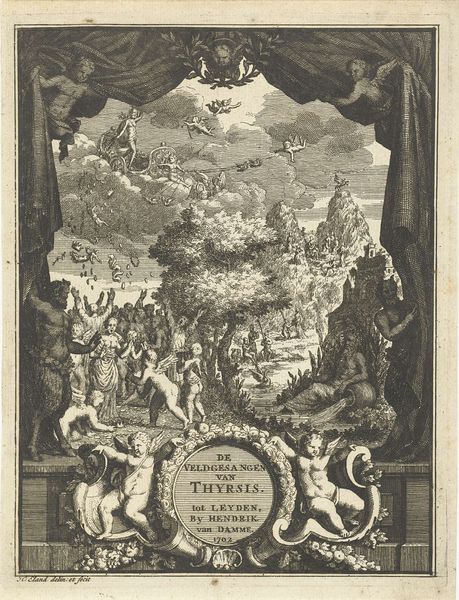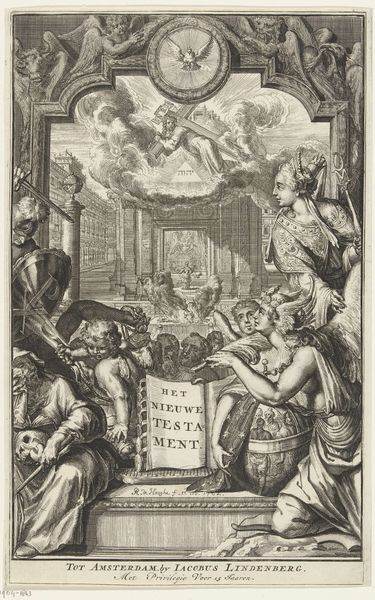
Titelpagina voor de Europische Mercurius voor het jaar 1706 1706 - 1707
0:00
0:00
pietersluyter
Rijksmuseum
graphic-art, print, engraving
#
graphic-art
#
aged paper
#
allegory
#
baroque
# print
#
old engraving style
#
history-painting
#
engraving
Dimensions: height 166 mm, width 132 mm
Copyright: Rijks Museum: Open Domain
Curator: Immediately striking! There’s a somber elegance here, achieved through delicate linework and complex symbolic layering, all in monochrome. Editor: Indeed. What we're looking at is the title page for the Europische Mercurius for the year 1706, produced around that time by Pieter Sluyter. It is currently held at the Rijksmuseum. This engraving exemplifies baroque aesthetics, featuring allegory and historical context woven together. Curator: Precisely. Observe how the composition is meticulously structured, a tapestry unfurling to reveal fragmented hand gestures above, set against the vase's central axis. There is a formal control that dictates the flow of information—notice the careful rendering of light and shadow. The lettering itself becomes a design element, enhancing the overall visual impact. Editor: I find those fragmented hands evocative of the fragile power held by truth in this historical period. The image points to themes of knowledge dissemination and sociopolitical commentary specific to the time. The inclusion of a partial solar eclipse implies an unveiling or revelation of concealed realities, hinting at critical reporting, while the lilies convey messages of virtue. Curator: An astute observation! Furthermore, if we analyse the juxtaposition of organic forms like the lily against geometric patterns in the cloth, we notice that such contrasts give visual weight that structures the image. The vase at the center also focuses on a classical allusion that grounds this historical record. Editor: The symbolism around the vase further reinforces ideas regarding the world as glory as alluded to the title along the vase’s frame. Consider the animals placed along its border: The horse stands for power and war. Together the imagery represents various layers of significance. It pushes us to delve deeper into social and political realities communicated by the 18th-century Dutch context. Curator: Agreed. The work reveals a level of aesthetic contemplation and offers opportunities to explore the formal composition qualities indicative of period style. Editor: Absolutely. It’s through those nuanced compositional components we see history—the artist engages in dialogue to dissect culture through art.
Comments
No comments
Be the first to comment and join the conversation on the ultimate creative platform.
